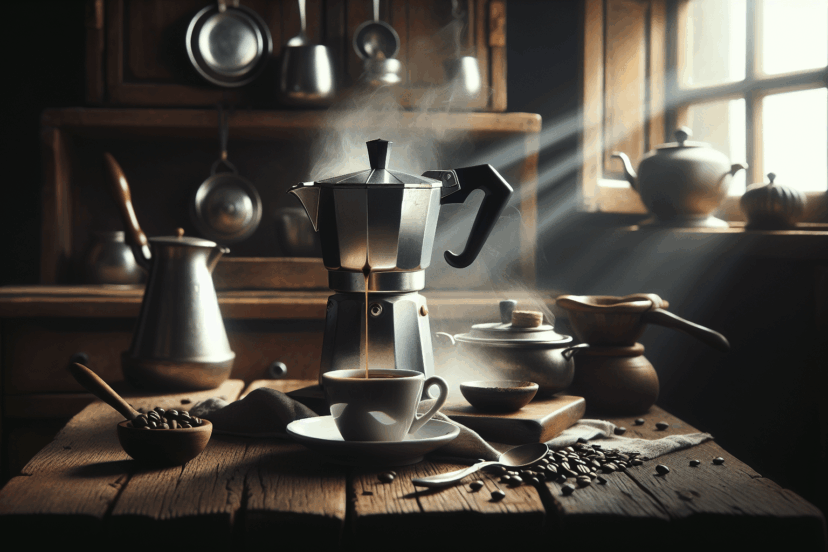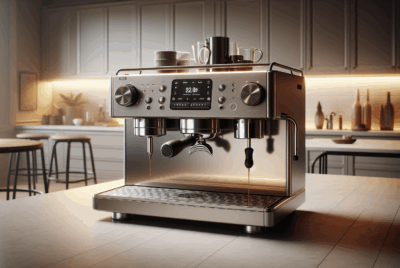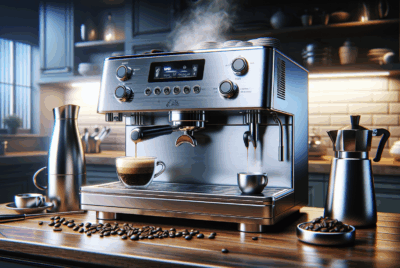How to Make Espresso Without Machine at Home
As an Amazon Associate, I earn from qualifying purchases, at no additional cost to you. Disclaimer
Have you ever wondered how you can enjoy a perfect cup of espresso in the comfort of your home without requiring a fancy espresso machine? The allure of a strong, invigorating shot of espresso is undeniable to coffee lovers like us. But, obtaining all the necessary equipment can often seem daunting and expensive. Fortunately, I’m here to tell you, brewing a delightful espresso at home without an expensive machine is entirely achievable! With a few tips, tricks, and a little effort, you can savor that rich, bold flavor whenever you like.
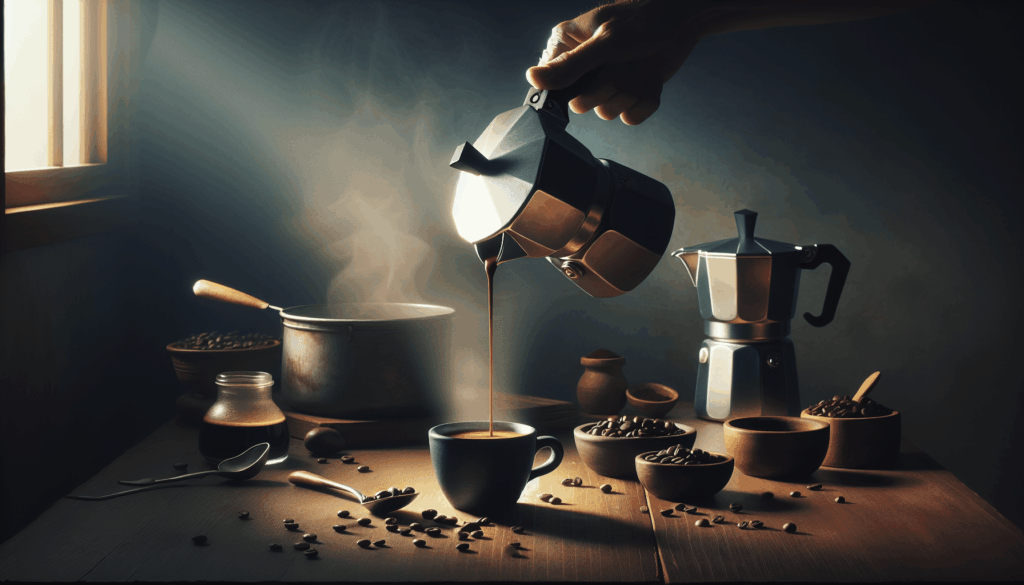
Explore the Best Espresso Machines
Understanding Espresso
Espresso is a concentrated form of coffee known for its bold flavor, creamy texture, and complex aroma. It’s usually served in small quantities and forms the base for various coffee drinks, including lattes, cappuccinos, and macchiatos.
What Makes Espresso Unique?
The magic of espresso lies in its preparation. It involves forcing a small amount of nearly boiling water through finely-ground coffee under pressure. This process results in a thick, concentrated beverage with a distinctive layer of crema on top. The combination of bold flavor and creamy texture sets espresso apart from regular coffee.
Essential Components for Making Espresso at Home
Before we start crafting the perfect espresso without a machine, it’s important to understand the components needed to make this iconic drink. Once we grasp these basics, improvising with what we have at home becomes significantly easier.
Fresh Coffee Beans
The cornerstone of any good cup of coffee — let alone espresso — is fresh coffee beans. I recommend looking for high-quality Arabica beans, as these usually deliver a superior flavor and aromatic profile. Always grind the beans right before brewing. Pre-ground coffee often results in a stale or less flavorful brew.
Grinder
To achieve the consistency needed for espresso, you ideally need a good-quality burr grinder. The grind size should be fine, akin to the texture of granulated sugar. If you don’t have a burr grinder, a blade grinder can work if you keep at it until you achieve the fine consistency you seek.
Water
Fresh, clean water is crucial in brewing an excellent espresso. The perfect temperature to aim for is between 195°F and 205°F (90°C to 96°C). Boiling water can scorch the coffee grounds, while cooler water won’t extract enough flavor.
Brewing Espresso Without a Machine
Now that we’ve covered the basic components, it’s time to dive into the fun part — brewing espresso without a traditional machine. Believe it or not, you can achieve a similar outcome utilizing some everyday kitchen devices.
Method 1: The French Press Method
Using a French press is one of the easiest options for creating espresso without a machine.
Step-by-Step Guide
-
Measure and Grind: Use about 2 tablespoons (or 14 grams) of coffee beans for a single serving. Grind the coffee to a fine texture.
-
Heat Water: Boil water, then let it cool for a minute to achieve the optimal brewing temperature of about 200°F (93°C).
-
Add Coffee: Place the ground coffee in your French press.
-
Pour Water: Slowly pour the hot water over the coffee grounds in the French press.
-
Stir and Cover: Stir the mixture slightly, then place the lid on the press, allowing it to steep for around four minutes.
-
Press: Slowly and steadily press down the plunger to separate the coffee grounds from the liquid, resulting in a rich espresso-like brew.
This method might not yield the iconic crema associated with espresso, but it delivers a bold and satisfying flavor that closely resembles traditional espresso.
Method 2: The Moka Pot Method
The Moka pot, or stovetop espresso maker, is another excellent tool for emulating espresso.
What You Need
- Moka pot
- Freshly ground coffee (fine)
- Water
Step-by-Step Guide
-
Assemble the Moka Pot: Fill the bottom chamber with water up to the safety valve. Insert the funnel, filling it with finely ground coffee, without pressing or tamping it down.
-
Heat It Up: Place the pot on medium heat. Monitor the pot closely. As the water boils, it will travel up through the coffee grounds, collecting in the upper chamber.
-
Listen and Remove: You’ll hear a hissing or bubbling sound when the brewing is close to completion. Remove the pot from heat promptly to avoid a burnt taste.
The Moka pot is a perennial favorite for coffee enthusiasts, providing a robust espresso-like drink with an intense flavor.
Method 3: The AeroPress Technique
The AeroPress is favored by many for its versatility and ease of use. While it’s primarily designed for making regular coffee, adjusting your technique can yield an espresso-style brew.
Step-by-Step Guide
-
Prepare the AeroPress: Position the plunger in the press slightly, invert the device, and add two tablespoons (14 grams) of finely ground coffee.
-
Add Water: Pour in about 3 ounces (90 ml) of hot water, ensuring it’s close to but not boiling, stirring the mixture gently.
-
Plunge: After about 30 seconds, carefully flip the AeroPress onto a cup and press down steadily to extract the espresso.
While the AeroPress won’t create a traditional espresso with crema, its full-bodied coffee is an impressive alternative.
Crafting Specialty Espresso Drinks
Once you’ve mastered brewing espresso-style coffee, why not use it as a base for other popular coffee drinks? I find playing around with recipes to craft specialty drinks adds a fun dimension to my coffee experience.
Lattes and Cappuccinos at Home
With your homemade espresso as a base, you can easily concoct a delicious latte or cappuccino.
DIY Latte
- Ingredients: A double shot of espresso, 6 ounces of milk.
- Instructions: Heat your milk and froth it using a whisk or milk frother. Pour the steamed milk over the espresso, and spoon the froth on top.
DIY Cappuccino
- Ingredients: A double shot of espresso, 4 ounces of milk.
- Instructions: Steam and froth the milk extensively to create more foam than for a latte. Pour the steamed milk over the espresso, topping with foam.
Iced Espresso Drinks
Espresso isn’t just a warm delight — iced espresso drinks are equally delightful and refreshing.
Iced Espresso
- Instructions: Pour your brewed espresso over a glass filled with ice. For added flair, incorporate a splash of milk or a flavored syrup.
This technique ensures you enjoy a smooth and invigorating cold coffee experience without needing to spend on a coffee shop’s version.
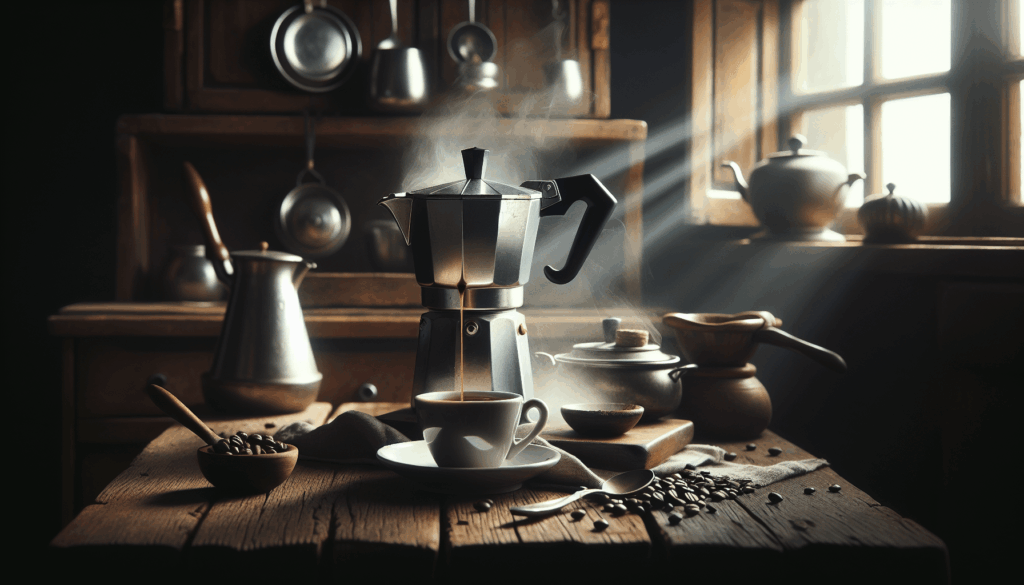
Espresso Troubleshooting Tips
Even when following instructions closely, you might find inconsistencies in your at-home espresso-making process.
Common Issues and Fixes
-
Weak Flavor: Adjust the grind size to be finer or increase the amount of coffee slightly.
-
Bitter Taste: Avoid over-extracting by using less coffee or a coarser grind. Additionally, ensure that your water isn’t too hot.
-
No Crema: Without a machine, crema can be elusive. However, using fresh, quality beans and ensuring even pressure when using a Moka pot or AeroPress enhances the chance of a crema-like outcome.
Consistency is Key
No matter which method you choose, one of the keys to making great espresso at home is maintaining consistency in every step of the process. Stick with the same grind, water temperature, and coffee-to-water ratio each time you brew.
Embracing the Home Brew Barista Journey
There’s something special about becoming your own barista. Not only do you learn to appreciate the nuances of coffee more deeply, but you also get to enjoy your own perfectly crafted cups without leaving the house.
Experiment and Enjoy
Experimentation is part of the journey. I encourage you to try the different methods presented and adjust techniques or measurements to suit your taste. Each brewed cup offers an opportunity to refine your craft and confirm what preferences stand out to you.
Ready, Set, Brew!
So, are you eager to perfect your espresso-making prowess without a machine? By now, you’ve stocked up on fresh beans, refined your grinding skills, and chosen your preferred brewing method. Remember, enjoying the process is just as important as the final product.
In the end, being able to brew espresso at home enables a delightful blend of comfort, convenience, and creativity. With some practice, you’ll find that capturing the essence of a good espresso without a machine is not only possible but utterly rewarding. Cheers to your home-brewed espresso endeavors!

